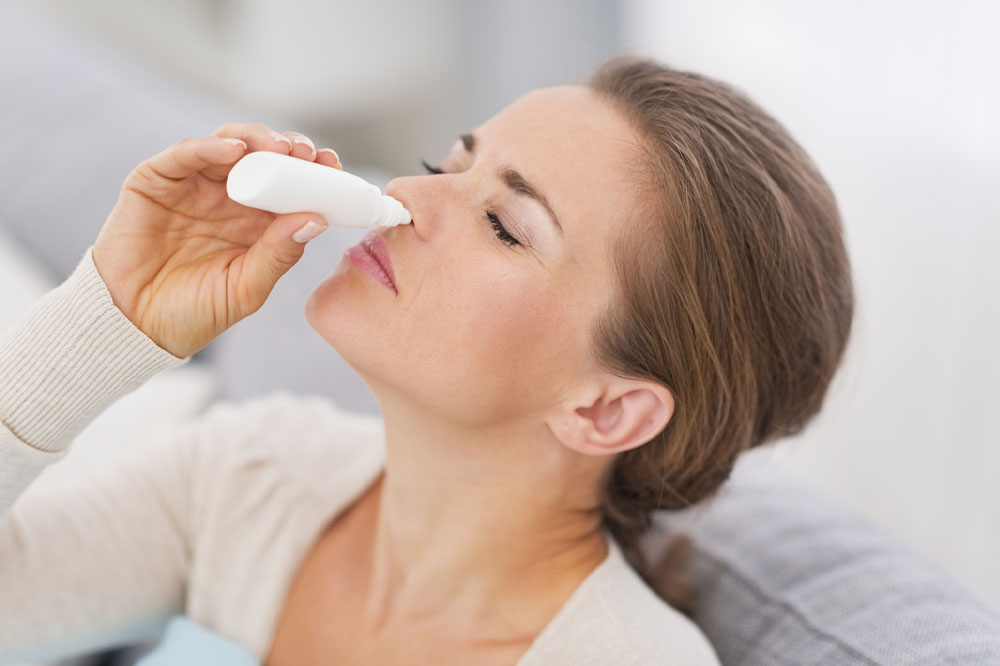
Nasal polyps – Symptoms, causes, and management
Nasal polyps can be a symptom of an underlying condition or occur independently. The visible signs and symptoms of nasal polyps include congestion, runny nose, loss of smell, and pressure or pain around your eyes and cheeks. A deviated septum may contribute to nasal polyps. However, they can also occur in people who do not have this condition, such as athletes who blow their noses frequently during exercise routines. Read on to learn more about nasal polyps.
What are nasal polyps?
Nasal polyps are small, soft growths that develop in the lining of the nasal passages and sinuses. They are also sometimes called nasal tumors or nasal corking. They are not cancerous, contagious, or caused by allergies. Nasal polyps may also be associated with other conditions like chronic rhinosinusitis (CRS), allergic rhinitis (AR), chronic sinusitis (CS), and asthma. Nasal polyps typically develop before the age of 40, and they do not usually cause symptoms until they grow larger or become inflamed or infected.
However, large nasal polyps can block airflow through your nose. If this happens, you may experience sinusitis, headaches, and a stuffy or runny nose. You may also experience difficulty breathing through one nostril at a time if large polyps block the other nostril completely. The result could be an imbalance in oxygen supply to both sides of the body and possible damage to blood vessels in the head (for example, inflammation).
Symptoms of nasal polyps
In most cases, nasal polyps are painless and cause no symptoms. However, some people with nasal polyps may experience the following symptoms:
Congestion or stuffiness
A runny nose
Loss of smell
Loss of taste
Pressure or pain around your eyes, cheeks, and teeth
Facial pain or headache
Snoring
Need to clear the throat frequently
Frequent bleeding of the nose
When to see a doctor?
It is advisable to consult a healthcare expert if the symptoms persist for more than 10 days. Nasal polyps symptoms are primarily symptoms of other conditions like a common cold. One must seek immediate help if:
One is having severe difficulty breathing
The symptoms suddenly worsen
Reduced ability to move eyes, or reduced vision
There is severe swelling around the eyes
Severe headache with high fever
Causes of nasal polyps
Scientists still don’t fully understand what causes nasal polyps, why some people have chronic inflammation, or why swelling and irritation (inflammation) in some people cause polyps to form but not in other people. Swelling occurs in the mucous membrane that lines the sinuses and nose, which produces fluid. Some research suggests that individuals who develop polyps have distinct immune system reactions and chemical markers in their mucous membranes than individuals who do not.
Although nasal polyps can develop at any age, they most frequently occur in young and middle-aged adults. Nasal polyps can develop anywhere in the sinuses or nasal passages. However, they most frequently form in the region where the sinuses near the eyes, nose, and cheekbones drain into the nose through winding tubes.
Who is at a higher risk?
A person’s chance of having nasal polyps may be increased by any illness that causes chronic inflammation and swelling (inflammation) in the sinuses or nasal passages, such as infections or allergies. Nasal polyps are more common in people with CRS, asthma, allergic rhinitis, and specific allergies. Allergies and asthma are known to cause inflammation in the nose. This inflammation causes nasal polyps over time and infection with bacteria called Mycoplasma pneumoniae. M. pneumoniae can be passed from person to person through coughing or sneezing. However, it’s more likely that people will catch it from contaminated water or food than from others who carry the bacteria on their hands without knowing it.
It’s common for people who have this condition—especially those who also have allergies or asthma—to experience frequent dryness in their noses as well as congestion during cold weather months (known as rhinitis).
How are nasal polyps diagnosed?
It is best to consult a healthcare expert if one shows symptoms of nasal polyps. To diagnose nasal polyps, a healthcare provider may:
Specifically, inquire about a person’s allergies, infections, and asthma history.
As a person describes their symptoms, be sure to include their duration.
Use a nasal endoscope to view the interior of one’s nose (thin, flexible tube with a tiny camera and light).
Order a CT scan to get a close-up look at a person’s sinuses.
Treatment
Nasal polyps are a challenging condition to clear up completely. A healthcare provider will develop a treatment plan to manage the symptoms and treat factors such as allergies that may lead to chronic swelling. The goal of nasal polyps treatment is to reduce their size or eliminate them. Sometimes, surgery may be required, but it is not a permanent solution as polyps may recur.
The treatment usually starts with a healthcare provider prescribing products that will make large polyps shrink or disappear. A doctor may prescribe corticosteroids to decrease the size of the polyps. However, if the prescription treatment doesn’t work for a patient, the doctor may suggest surgery to eliminate the nasal polyps completely.
Surgery is methodically done under general anesthesia and generally done by an ENT doctor (ear, nose, throat doctor). Surgery to remove nasal polyps usually requires anesthesia. Surgery can be performed under local anesthesia, general anesthesia, or sedation. Here, the doctor will cut into the wall of the patient’s nose and remove some of the tissue that contains the polyps. After surgery, one may need to take prescribed treatment for a few days to prevent infection.
There are many different types of surgery, and it is essential to find a doctor experienced in removing nasal polyps.
Prevention
One must follow the following steps to manage nasal polyps or prevent them from recurring:
Manage conditions like asthma and allergies as suggested by the doctor
It is best to avoid nasal irritants
Practice good hygiene by washing hands regularly to avoid any infection
Use a humidifier to moisten the breathing passage
Use salt water spray or nasal spray to rinse the nasal passage


